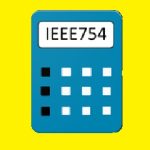In the vast landscape of digital communication and data storage, the conversion between binary and ASCII (American Standard Code for Information Interchange) is a fundamental operation. From transmitting text over networks to storing information in files, understanding and manipulating binary and ASCII representations are essential skills. In this article, we’ll delve into the significance, functionality, and practical applications of binary to ASCII conversion, shedding light on its utility in the digital world.
Before exploring binary to ASCII conversion, let’s briefly review what binary and ASCII represent:
- Binary: Binary is a base-2 numbering system that uses two symbols: 0 and 1. In computing, binary is used to represent data and instructions using combinations of these two symbols, with each digit (bit) representing a power of 2.
- ASCII: ASCII is a character encoding standard that assigns numeric values to characters. In ASCII, each character is represented by a 7-bit binary number, allowing computers to store and communicate textual data using binary code.
The Significance of Binary to ASCII Conversion
Binary to ASCII conversion plays a crucial role in various aspects of digital communication, data processing, and information storage:
- Text Transmission: When transmitting text over digital communication channels such as networks or serial connections, data is often encoded in binary form. Converting this binary data to ASCII allows receivers to interpret and display the transmitted text correctly.
- File Encoding: In file storage and processing, textual data is typically encoded using ASCII or its extended variants such as UTF-8. Converting binary data to ASCII facilitates file manipulation, editing, and interpretation using text-based tools and applications.
- Data Representation: In programming and data processing tasks, binary data may need to be interpreted as ASCII characters to perform operations such as parsing, searching, or data analysis on textual data embedded within binary streams.
Functionality of Binary to ASCII Conversion
Binary to ASCII conversion involves interpreting binary data as ASCII characters according to the ASCII encoding standard. The process typically entails the following steps:
- Grouping Bits: Binary data is grouped into sets of 7 or 8 bits, corresponding to ASCII character representations.
- Conversion: Each group of binary bits is converted to its equivalent ASCII character according to the ASCII encoding table.
- Concatenation: The resulting ASCII characters are concatenated to form the converted text string.
Practical Applications
The practical applications of binary to ASCII conversion are diverse and widespread, spanning various industries, disciplines, and everyday scenarios:
- Network Communication: In network protocols such as HTTP, FTP, and SMTP, binary data is often encoded as ASCII for transmission over the network, enabling interoperability between different systems and platforms.
- File Transfer: When transferring files between systems or devices, binary data is encoded as ASCII during transmission to ensure compatibility and integrity, particularly in text-based file formats such as CSV (Comma-Separated Values) or XML (eXtensible Markup Language).
- Data Logging: In industrial automation and data logging systems, binary sensor data is often converted to ASCII for storage and analysis, allowing engineers and analysts to interpret and visualize the collected data more effectively.
- Software Development: In software development, binary to ASCII conversion is used in debugging, logging, and diagnostic tasks to display binary data in human-readable form, aiding developers in identifying and troubleshooting issues.




